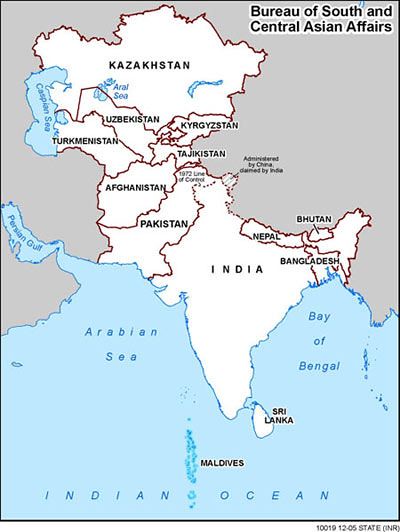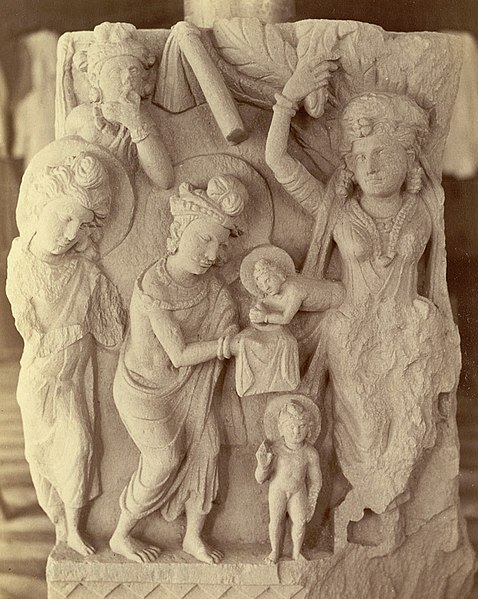 The birth of the Buddha, Peshawar, Gandhara, an ancient part of greater India, which seceded and became modern Pakistan and Afghanistan (en.wikipedia.org)
The birth of the Buddha, Peshawar, Gandhara, an ancient part of greater India, which seceded and became modern Pakistan and Afghanistan (en.wikipedia.org)Tajikistan Discovers New Giant Buddha A 1600 year old statue of a reclining Buddha attaining final nirvana -- uncovered by archeologists from the former Soviet Union 35 years ago yet never seen by the outside world -- will soon be on display in Dushanbe, the capital of the Central Asian Republic of Tajikistan.
A 1600 year old statue of a reclining Buddha attaining final nirvana -- uncovered by archeologists from the former Soviet Union 35 years ago yet never seen by the outside world -- will soon be on display in Dushanbe, the capital of the Central Asian Republic of Tajikistan.
After Afghanistan’s CIA-created "Taliban" was prompted to destroy the largest Buddhas in Central Asia, the newly unveiled Tajikistan Buddha, which dates back to the 5th century ACE, will finally be recognized as the largest Buddha statue in Central Asia.
The 46 feet (14 meter) long Tajik Buddha was first excavated by archeologists from the former Soviet Union in 1966, from a vast Buddhist monastery complex in Ajina Tepa in southern Tajikistan. Ajina Tepa was on the ancient Silk Route connecting China, Europe, and Central Asia with Indian seaports.
Instead of publicizing their enormous find, the Soviets excavated the Buddha only to hide it.

The Buddhistic cloister of Ajina-Tepa is situated 19 miles (12 km) east of the city of Kurgan-Tiube, Tajikistan. The site is being considered to be put on the World Heritage list of sites who have "outstanding universal value" to the world.
Bringing the Buddha to light has been the lifetime task of Dr. Babamulloev Saidmurad, the newly appointed Director of Tajikistan’s Museum of National Antiquities which will officially open in August.
"The Soviets tried to tell the Tajiks that they had no history before the 1917 Russian Revolution even though the Tajiks are the most ancient race in Central Asia," says Saidmurad. He says smaller Buddhist statues and murals were shipped to the Hermitage Museum in St. Petersburg and hidden away in its vaults.
But the Tajikistan Buddha was too big to move and was buried in the basement of a Dushanbe museum.
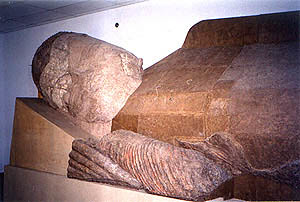 Ajina Tepe Buddha, Tajikistan (cais-soas.com)
Ajina Tepe Buddha, Tajikistan (cais-soas.com)
"The Soviets never allowed Tajikistan to show its pre-Islamic and Islamic archeological collections," says Frederick Roussel of Acted, a leading French non-governmental organization in Central Asia, which funded the restoration of the Buddha.
- Buddhism in Central Asia (changturtle)
- PHOTOS: Turtle uncovers the evidence
- The Lost World of Buddhist Gandhara
Nine months ago Acted paid for a Russian archeological expert to come from the Hermitage Museum to spend three months putting together the puzzle of the Buddha.
"The Buddha was in 100 pieces stored in boxes in the basement of the museum and it had to be put together like a huge jigsaw," says Saidmurad. "We worked like [asuras] around the clock for six months."
The Buddha lies on his side, his face showing absolute serenity reflecting the nearness of nirvana in the last moments before his passing out of samsara (the Wheel of Rebirth). Around the base of the sleeping Buddha and on the walls of the monastery were more than one thousand paintings in bright colors depicting the life of Buddha, many of which were sent to the Hermitage.
Br. Chan Khoon San visited Tajikistan's National Museum of Antiquities in Dushanbe to view the famous terracotta Buddha statue, discovered in the 1960s among the ruins of a temple called Ajina Tepa at Kurgan Tuibe, about 100 km south of Dushanbe. Called "The Buddha in Nirvana,'" it dates to the 6th or 7th century ACE, measuring 41.7 feet (12.8 m) long and 9 feet (2.7 m) high. Because of its huge size and fragile condition, it was cut into 92 pieces before being transported to Dushanbe. The restoration of the sculpture had been a long and difficult process completed for the opening in September 2001 during the course of Tajikistan's 10th anniversary of independence celebrations.
Some 186.4 miles (300 km) north of Bamiyan, Afghanistan -- the site of what were once reckoned the largest Buddha statues in Central Asia if not the world, which is probably the great Leshan Buddha in Sichuan, China -- Ajina Tepe was part of the widespread Buddhist renaissance and culture in Central Asia and Xinjiang under the Kushan kings.
The Kushans were descended from a branch of the now Chinese Yueh-chih tribes that first invaded Central Asia around 140 BCE. The Kushans created their empire in the first century ACE uniting a vast land area stretching from southern Pakistan and western Iran to Afghanistan, Central Asia, and Xinjiang.
In the second century ACE, the great Kushan king Kanishka, who extended their empire to India, was a major patron of the Mahayana school of Buddhism, the first to humanize the figure of Buddha.
- [Editor's note: In fact the Theravada school was the first to humanize the historical Buddha, while Brahmanism and Mahayana deified him, exalting him and other buddhas and bodhisattvas to the status of "gods" or akasha devas, space deities. The Buddha was not a creator god (brahma), shining one (deva), fierce entity (yakkha), fairy or angelic messenger (gandharva), he explained; when asked he instead answered that he was "awake." Buddha, a title, means supremely "Awakened One." Hinduism inherited the mantle of Vedic Brahmanism and co-opted the massively popular Buddhism, reintegrating it into the establish religion of the brahmin priests and giving birth to the Mahayana or "Greater Vehicle" school of Buddhism. By making buddhas divine, and emphasizing veneration of Maitreya the Buddha-to-come rather than the historical Shakyamuni Buddha, Siddhartha Gautama, Hinduism and Mahayana did a disservice to the Buddha-Dharma, the liberating truth the very human Buddha had rediscovered and made known to the world.]
Previously, out of reverence and respect, the historical Buddha (and previous buddhas whom the Buddha had spoken of) had only been DEPICTED with symbols such as the Dharma wheel. Although the Kushans later broke up into smaller kingdoms, they continued their dominance of the region until the 6th century ACE.
In March, 2001 the CIA created, backed, and prompted Taliban dynamited two soaring Buddha statues cut into limestone cliffs of the Hindu Kush mountains in Bamiyan, central Afghanistan, in the Hazarajat region.
The larger Buddha, which stood at 187 feet (57 meters), was the largest standing Buddha in the world and was carved between 300-400 ACE.
- [In fact, according to the Russian mystic Madame Blavatsky one of the founders of Theosophy, the statues are far, far older: They did not originally represent the historical Buddha, she claimed, but Man in previous epochs, possibly former buddhas such as Kassapa Buddha or Konagamana Buddha, from a prehistoric time when human beings were much bigger by nature. Ancient Buddhist monks re-purposed the ancient figures using plaster and bright colors to represent, it seems, the historical Buddha and Maitreya the Buddha-to-come. Other figures may have represented other buddhas, which are today depicted in Theravada Buddhist temples as identical cross-legged figures in spite of their massive size differences according to sacred Theravada texts].
A trip through Tajikistan as Asia becomes Eurasian Muslim then Caucasian Russian
The Taliban, and later Al Qaeda, were creations, bogeymen. The former was composed of released criminals from neighboring Arab countries armed to be insurgents successfully fending off Russian troops in the USSR's own "Vietnam." They were fed a philosophy of reinterpreted jihad and Wahabism, a very narrow and fundamentalist interpretation of beautiful Islam, to Arab criminals who were told that "infidel" Russians were invading and desecrating holy Muslim land.
But the Pashtuns and other Afghan ethnic tribes held no such animosity toward Buddhism, the tradition of their ancestors. The same extended tribes (such as Uzbeks), but dominated by Tajiks, formed the peaceful peoples of Central Asia overtaken by the Russian empire that was then undermined by the USA/CIA and remnants of the British imperial forces in what is now Afghanistan. It was of vital importance to the powers that be, now generally referred to as the multinational "military-industrial complex," that Zero line not be crossed. This, after all, is a land of ancient disputes and strategic importance.
- What is "Zero line"? In its long history, the region today delineated as both Afghanistan and Pakistan has known many borders, yet none have been more important to American security than the one today separating Pakistan from Afghanistan known as the Durand line but referred to by the military and intelligence community as Zero line. The US has fought on both sides of the Durand line: In the 1980s on the side of extremist-political Islam from Pakistan and since September 11, 2001, against it from the Afghan side. A funny thing happened to the US when the Obama administration decided to cross Zero line...
"I did not sleep the whole night when I heard that the Taliban had destroyed the Bamiyan Buddhas, but it only moved us to work harder to restore our Buddha, which is now the largest in Central Asia,’’ says Saidmurad.
"The Taliban have destroyed not just Afghanistan’s history but also the pre-Islamic cultural heritage of all Central Asia [Iran, ancient post-Alexander Greece, Bactria, Pakistan, greater Kashmir, Afghanistan, Sistan Baluchistan, Turkmenistan, Uzbekistan, and Tajikistan], because the Bamiyan Buddhist civilization [from the historical Buddha's possible birthplace] was the center for the spread of Buddhism in Central Asia and China, says Parveen Abdullova, an assistant to Saidmurad and a prominent Tajik restorer and artist. The Buddhist Gandhara civilization in Pakistan, Bamiyan in Afghanistan, and Kurgan Tepe (Tyube) in Tajikistan were all interlinked," she added.
The first Tajiks heard of their rediscovered Buddha was in mid-March when a local newspaper ran a story headlined "Tajikistan’s Buddha is sleeping safely [correction: passing blissfully into final nirvana] despite Taliban actions."
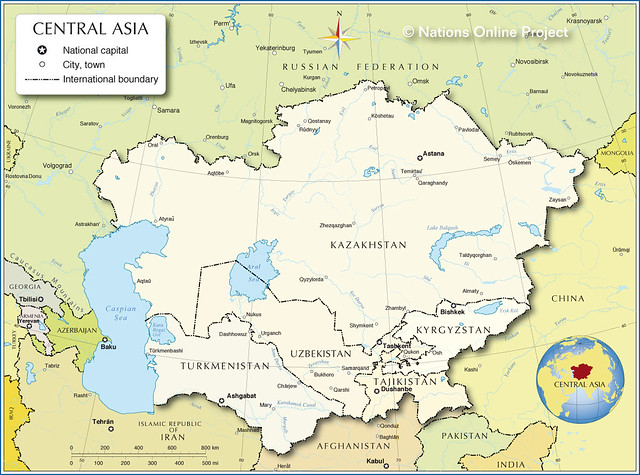
When Tajik President Imamali Rakhmanov opens the new Museum in August, remarkable artifacts of Zoroastrianism and Hinduism will also be on display. The Kushans allowed all three religions to flourish side by side in their empire. A 5th century statue shows the Hindu god Shiva and his wife Parvetti sitting on a cow. The statue is the largest artifact to date showing the spread of Hinduism so far north into Central Asia, where it was able to co-exist with Zoroastrianism and Buddhism.
- Sufism, a mystical form of Islam made famous by the poet Rumi, was influenced in this area by its indigenous Buddhism and the conquering, sometimes marauding Arabs (perhaps prommpted by the anti-deva asuras) touting Islam as the new fundamentalism.
The Zoroastrian finds are remarkable in their own right: the Museum will have the best collection of the 3,400-year-old Zoroastrian civilization outside Iran.
The Zoroastrians, or Parsees [founded by the asura or titan Zoraster aka Zarathustra], who still survive in small numbers in Iran, Bombay, and South and Central Asia, developed a major center in Pendzhkent in the western corner of southern Tajikistan close to the border with Uzbekistan.
Here, the ancient city of Zoras included a vast temple complex and a developed urban infrastructure, which the Soviets had excavated in the 1960s but also refused to display.
A few Zoroastrians still live in Turkmenistan, Azerbaijan, and Bukhara in Uzbekistan. Bukhara became the capital of Islamic Central Asia, demonstrating the tolerance shown by all Muslim rulers to other faiths in Central Asia.
A remarkable 5th Century carved wooden gate once displayed at the entrance to a Zoroastrian temple near Khodjent in northern Tajikistan, excavated in 1957, gives incredible detail of Zoroastrian history and mythology. According to Saidmurad, the Persian poet Firdausi used the detail on this gate to write his epic poem of Persian history, the Shahnama.
The panel, which is charred with fire, shows the legendary giant [titan], Shah or King Zorak -- a figure who abounds in ancient carvings and paintings in Central Asia, Iran, and Afghanistan and is also the name of an abandoned mountain and town close to Bamiyan. The town was destroyed by the Mongols in 1220. There are also paintings of Zohrak depicted as a frightening demon [asura]. Another figure shows a bird-angel with two heads [a garuda or gandharva in Buddhist cosmology].
Greek and Roman civilizations will also be represented when the Museum opens. Early Kushan culture was heavily influenced by the Greeks who invaded Central Asia under Alexander the Great in 329 BCE. Central Asia was then ruled by the Sogdians, whom the Tajiks consider ancestors. After defeating the Sogdians, Alexander married a Sogdian princess, Roxana, from the city of Oratoba, which is close to modern day Khodjent.
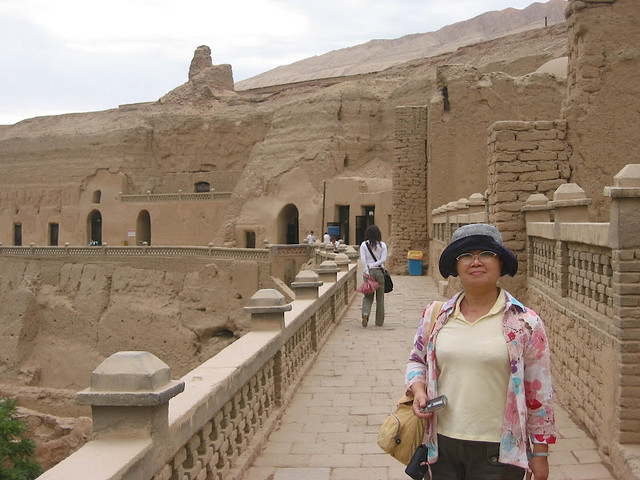 Bezeklik's thousand Buddha cave (Pinkkaz/blog.travelpod.com)
Bezeklik's thousand Buddha cave (Pinkkaz/blog.travelpod.com)The discovery and restoration of Tajikistan’s giant Buddha gives hope to those who were distraught by the destruction of the Bamiyan Buddhas. "This Buddha is a most remarkable discovery for the Buddhist world and the cultural heritage of mankind," says Hiroshi Takahashi, a former Japanese and now UN diplomat in Dushanbe, who saw the Buddha recently.
"There will be many people in Japan and other countries who will be enormously interested in coming to see this Buddha," he added. Beset by years of civil war, drought, and economic misery, landlocked Tajikistan badly needs a boost to attract foreign investment and tourism.
The opening of the new Museum in August 2001 will clearly put Tajikistan on the map for devotees of three major religions as well as lovers of ancient art and history.
